Beautiful birds can be seen across the globe, but which ones are the most beautiful? And what’s the rarest bird from around the world? Check out our list of the 20 top beautiful birds to discover more. You’ll learn what makes each of these beautiful birds unique, where they live, what they eat, and what they look like.
1 | 20

Most bird watchers and scientists say that there are roughly 9,000 to 10,000 species of birds. One of the main ways to identify them is physical appearance and once you start looking closer, it becomes obvious that birds come in many shapes and colors. And some are absolutely drop-dead gorgeous. From those with incredible eyelashes to the ones that look like tiny cotton balls, continue scrolling and check out some of the most beautiful birds from around the world.
2 | 20

Eurasian Hoopoe (Upupa epops): Hoopoes are colourful birds found across Africa, Asia, and Europe, notable for their distinctive “crown” of feathers. Three living and one extinct species are recognised, though for many years all of the extant species were lumped as a single species—Upupa epops. In fact, some taxonomists still consider all three species conspecific. Some authorities also keep the African and Eurasian hoopoe together, but split the Madagascar hoopoe. Photo credit: Katherine Nicola.
3 | 20

Oriental Dwarf Kingfisher (Ceyx erithaca): The Oriental Dwarf Kingfisher (Ceyx erithaca / Ceyx erithacus) also known as the Black-backed Kingfisher or Miniature Kingfisher – is the smallest kingfisher species; being only slightly larger than a medium-sized hummingbird. Like other kingfishers, it is brightly colored, with a large and powerful bill.Photo credit: Sanjeev Kapadia.
4 | 20
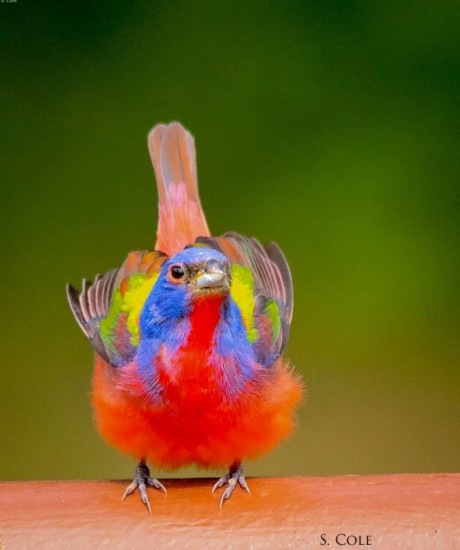
Male Painted Bunting (Passerina ciris): The Painted Buntings (Passerina ciris) are small, brightly colored members of the Cardinal family. They are also known as Painted Finches or Rainbow Buntings. Their common names were inspired by the brilliant plumage details of the males. Many consider the male Painted Bunting to be the most beautiful bird in North America, and they are amongst the most popular visitors of bird feeders. Photo credit: Sonya Cole
5 | 20
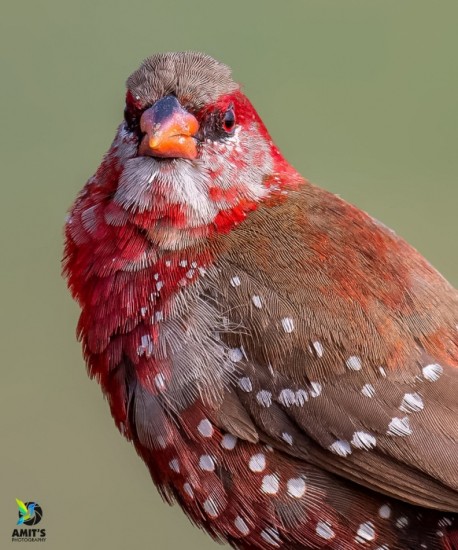
Red Avadavat, Red Munia or Strawberry Finch (Amandava amandava): This type of bird called strawberry finch (red avadapat) because it has a color fur that resembles a strawberry fruit that is dominated by red color decorated by white spots. During the breeding season, this bird usually changes color especially in male birds. Where during the breeding season, the male will produce more red with more white spots, dark red head and black tail. Photo credit: Amit Sharma.
6 | 20
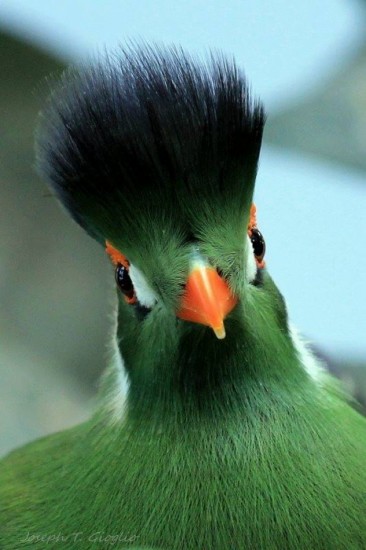
The White-cheeked Turaco (Tauraco leucotis):is found in Eritrea, Ethiopia, and South Sudan. A striking, crested head describes most of the 23 turaco species. On the white-cheeked turaco, the rounded blue-black crest has hairlike feathering which is elongated and slicked back. Prominent red eyerings also stand out. Lacking feathering, they are composed of wattles: a single row of tiny ones below the eye; two or three rows of larger wattles above and to the sides. In front of the eye is a roundish white patch. Legs are grayish-black. Toes are semi-zygodactylous. That is, the outer toe is normally at a right angle, but can be switched backwards or forwards. Claws are short and sharply curved. There are two subspecies: T.l. leucotis is described above. T.l. donaldsoni has a crest that is green towards the front and dull crimson at the back. Wings are a dull violet-blue. Photo credit: Joseph T Gioglio
7 | 20
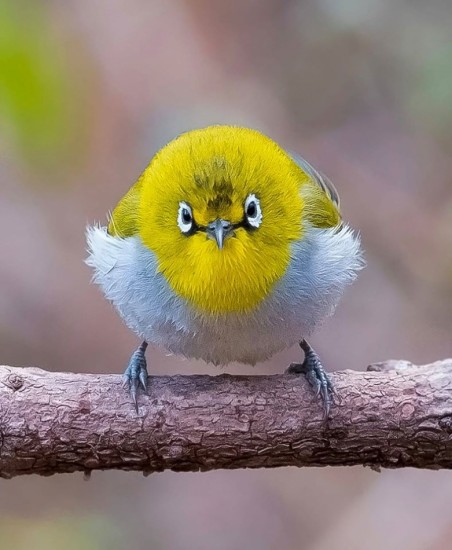
Indian White-eye (Zosterops palpebrosus): The Oriental White-eye (Zosterops palpebrosus) is a small passerine (aka songbird) that has a characteristic white ring of feathers around its eyes. This residential species occurs in a wide range of habitat, from forests, mangroves to urban parks and gardens. It is also well-known for its melodious song, thereby making it highly sought after by the caged bird trade. In Singapore herself, the high levels of poaching in the 1970s played a role in a local extinction event. However, the population of Oriental White-eyes rebounded to healthy levels but is suspected to be made up of both native and non-native individuals that were escaped or released from the cage bird trade. Photo credit: Debashis Biswas
8 | 20
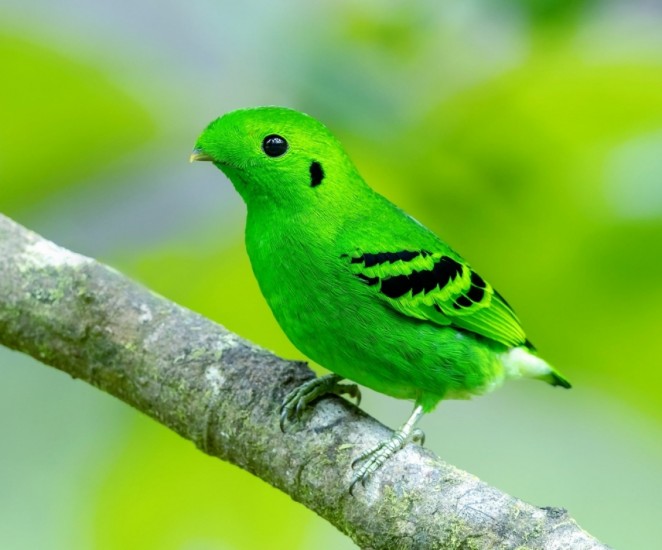
Green Broadbill (Calyptomena viridis): Green Broadbill (Calyptomena viridis) is a species of bird in the Calyptomenidae family. The bird is about 17 cm long, plumaged in brilliant green with a black ear patch, widely gaped bill, rounded head, short tail and three black bars on each wing. The beak itself is very weak and almost hidden by the crest above it. Both sexes are similar. The female is duller and has no black markings on its ear patch and wing coverts. The green broadbill is distributed in broadleaved evergreen forests of Borneo, Sumatra and the Malay Peninsula where it frequents lowland and lower montane rainforest. Photo credit: Tan Tc
9 | 20
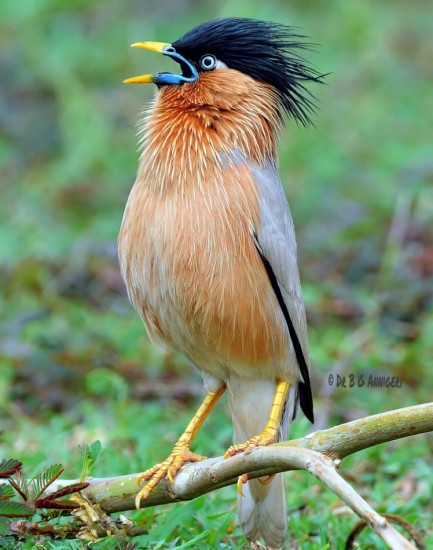
Brahminy starling (Sturnus pagodarum): The brahminy myna or brahminy starling (Sturnia pagodarum[2]) is a member of the starling family of birds. It is usually seen in pairs or small flocks in open habitats on the plains of the Indian subcontinent. This myna is pale buff creamy with a black cap and a loose crest. The bill is yellow with a bluish base. The iris is pale and there is a bluish patch of skin around the eye. The outer tail feathers have white and the black primaries of the wings do not have any white patches. The adult male has a more prominent crest than the female and also has longer neck hackles. Juveniles are duller and the cap is browner. Photo credit: DrBasawant GAnnigeri
10 | 20
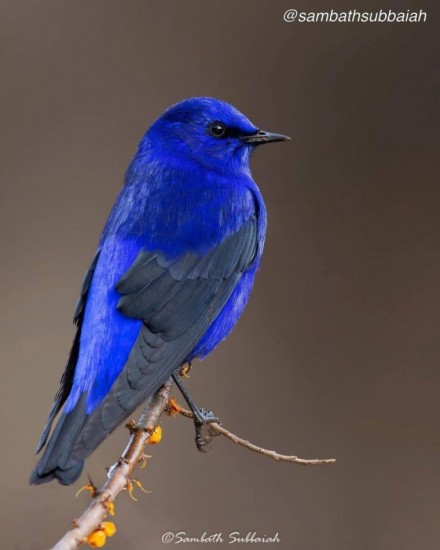
Grandala in (Grandala coelicolor): Often seen swirling in flocks above mountain passes, scrubby alpine forests, and highland meadows, this large thrush is unlike any other. Adult male is a deep, almost eye-searing blue with jet-black wings. Females and immatures are brown with white streaks all over the head and underparts and weak white bars on the wings. Long-billed and sharp-winged profile, along with flocking behavior, is more reminiscent of starlings than thrushes. Photo credit: Sambath Subbaiah
11 | 20
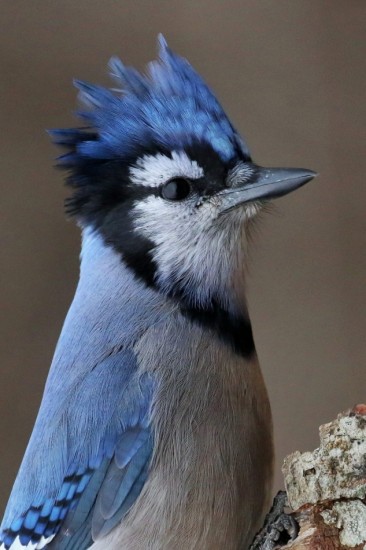
Blue Jay (Cyanocitta cristata): The blue jay (Cyanocitta cristata) is a talkative, colorful bird commonly seen at North American feeders. The species name aptly translates as “crested blue chattering bird.” Male and female blue jays have similar coloration. The blue jay has black eyes and legs and a black bill. The bird has a white face with blue crest, back, wings, and tail. A U-shaped collar of black feathers runs around the neck to the sides of the head. Wing and tail feathers are barred with black, light blue, and white. As with peacocks, blue jay feathers are actually brown, but appear blue because of light interference from the feather structure. If the feather is crushed, the blue color disappears. Photo credit: Charles Wheeler
12 | 20
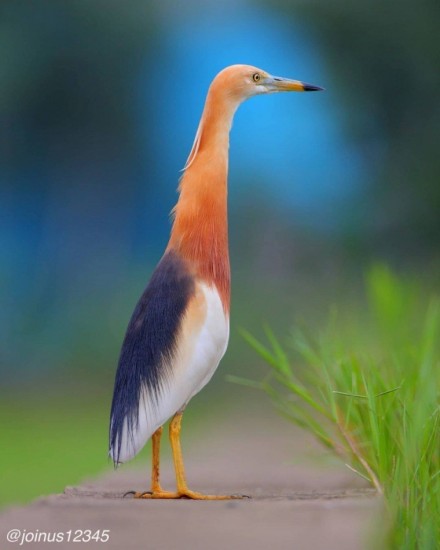
Javan Pond Heron (Ardeola speciosa): Javan Pond Heron (Ardeola speciosa) is a species of bird in the Ardeidae family. Forest : Subtropical/Tropical Mangrove Vegetation Above High Tide Level ; Wetlands (inland) : Bogs, Marshes, Swamps, Fens, Peatlands, Permanent Freshwater Lakes (over 8ha), Permanent Freshwater Marshes/Pools (under 8ha) ; Artificial/Aquatic and Marine : Seasonally Flooded Agricultural Land. Photo credit: joinus12345 on Instagram
13 | 20
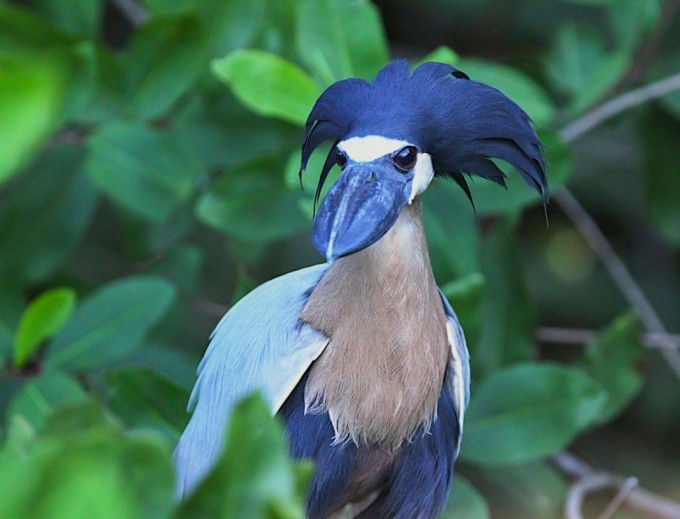
Boat-billed Heron (Cochlearius cochlearius): Bizarre nocturnal heron of mangroves and freshwater marshes in tropical lowlands; spends the daytime roosting in trees, often in loose groups. Comes out at night to feed along the edge of lakes and rivers. Easily identified by huge ‘boat bill’ and big brown eyes. Adult has black crown, pinkish breast, and silvery gray back; immature pattern similar, but plumage duller and browner overall. Photo credit: Sybil Wentzell
14 | 20
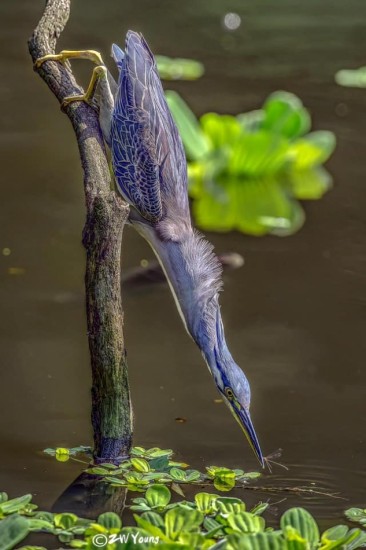
Striated Heron (Butorides striata): Butorides is a genus of small herons. It contains three similar species, the Green Heron or Green-backed Heron, Butorides virescens, the Dwarf Bittern (Butorides sturmii), and the Striated Heron, Butorides striatus. A fossil species, Butorides validipes, is known from the Early Pleistocene of Florida. Adults of both extant species are about 44 cm long, and have a blue-black back and wings, a black cap and short yellow legs. Juveniles are browner above and streaked below, and have greenish-yellow legs. The species have different underpart colours, chestnut with a white line down the front in Green Heron, and white or grey in Striated. Both breed in small wetlands on a platform of sticks often in shrubs or trees, sometimes on the ground. Butorides herons stand still at the water’s edge and wait to ambush prey. They mainly eat small fish, frogs and aquatic insects. They sometimes drop food on the water’s surface to attract fish. Photo credit: ZW Young.
15 | 20
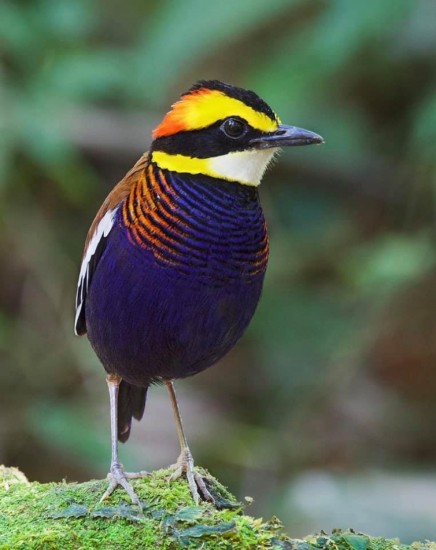
Malayan Banded Pitta (Hydrornis irena): The Malayan banded pitta Hydrornis irena is a species of bird in the family Pittidae. It is found in Thailand, the Malay Peninsu. Broad red-orange eyestripe glows like lava on this shy, jewel-like bird. Male has deep blue underparts with thin tiger-like barring on the sides of the chest. Female is pale below with fine dark barring. Forages quietly on the floor of dense lowland forests. Most common calls are a quiet roar and a short, descending “pr-r-r-r-r”. Photo credit: Ananth Ramasamy
16 | 20
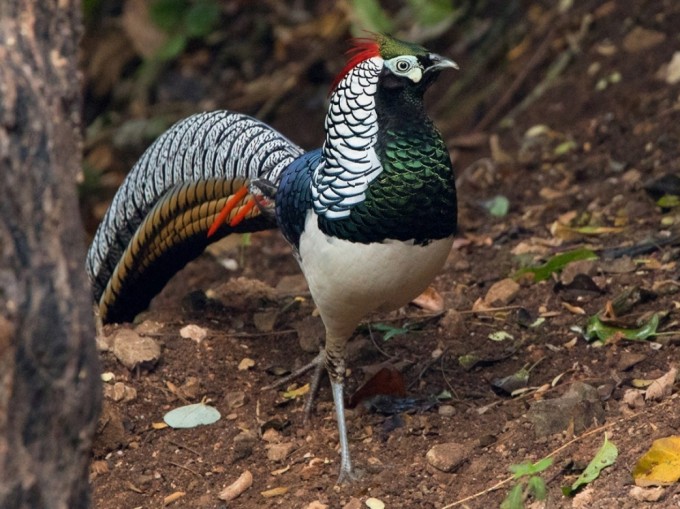
Lady Amherst’s Pheasant (Chrysolophus amherstiae): The Lady Amherst’s Pheasant is found in SW China and Myanmar. The first specimen was sent to London UK in 1828, by Sarah Countess Amherst, wife of the Governor General of Bengal. The adult male has dark bluish-green mantle, back, scapulars and breast with black scales. The uppertail-coverts are black-and-white, mixed with orange and red. The longer feathers show long, pointed orange tips. The rump is buffy-yellow and barred bluish-green. The long, arched, pointed tail is white with black bars and vermiculations. Throat and foreneck are blackish. The belly is white whereas vent and undertail-coverts are white barred black. On the head, face, chin and forecrown are dark bluish-green. On the hindcrown, there is a bright red crest ending to a point on the nape. A superb black-scaled neck-ruff adds an indisputable touch of class to the bird’s appearance. The bill is pale bluish-grey. The eyes are white, surrounded by broad, bare, pale blue eyering. We can see a small yellowish wattle under the eye. Legs and feet are pale blue, with spurs in male.Photo credit: Ernesto Murguia
17 | 20
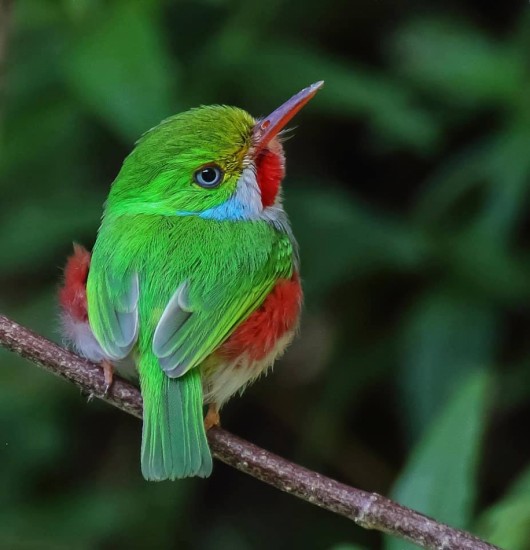
Cuban Tody (Todus multicolor): A small, colorful bird with a distinctly big-headed appearance. The most brightly colored member of the genus, the Cuban Tody has bright green upperparts with gleaming yellowish-green supercilia, yellow lores, red throat, pinkish flanks, whitish belly, and bright yellow crissum. This species is the only member of the genus occurring in Cuba, where it is widespread across a diversity of habitats and often abundant where it occurs. As is the case with other Todus, this species nests in holes burrowed in clay embankments, occasionally in a rotten trunk or even at the entrance to limestone caves. Photo credit: Karlos Ross
18 | 20
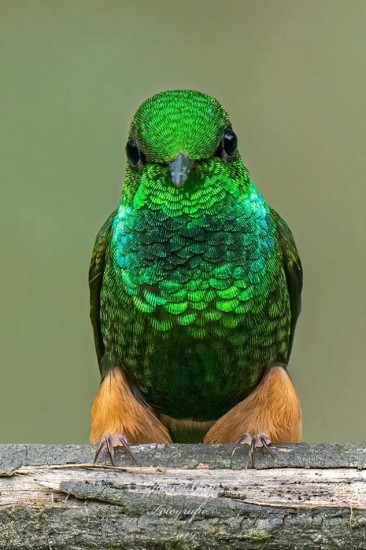
Booted Racket-tail (Ocreatus underwoodii): The Booted Racket-tail is simply a marvel of nature. It has a long tail, which is composed of bare rachises ending in a wide racket-like structure. At first glance, it can resembled the Long-tailed Sylph, but the tail’s shape is unmistakable once taken notice. The long, slim tail ending in a wide feather reminds me of a Motmot, albeit a very small one. Other than its most conspicuous trait, it has white feathers covering its legs, which explains why it is called Booted. The body is mostly green but iridescent like many hummingbirds, making it change in coloration with the view angle. The black bill is straight and short. Photo credit: James Gan
19 | 20
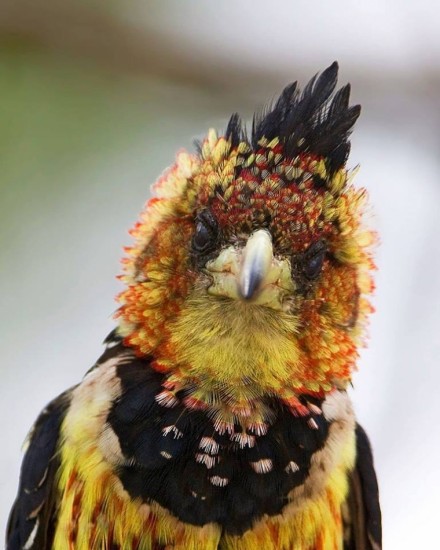
Crested Barbet (Trachyphonus vaillantii): The crested barbet has the nickname “fruit salad” for its random, mixed plumage coloration and its partially frugivorous diet, though these birds will eat much more than fruit. A distinctive and common barbet, these members of the Lybiidae bird family are great birds to see for any birder visiting their range in southern Africa. Discovering more crested barbet facts can help you be even more excited about this unique bird, and more eager to add it to your life list. Photo credit: Marc Guyt
20 | 20
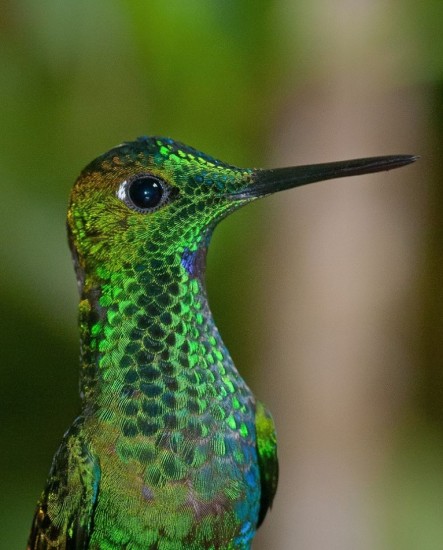
Green-crowned Brilliant (Heliodoxa jacula): Fairly large hummingbird, sleek and long-tailed with straight bill. Male is entirely emerald green with small blue throat patch only visible at some angles. Female has spotted green breast; note conspicuous white mustache stripe and white spot behind eye. Found in forested habitats and edges; visits feeders. Photo credit: Benoit Beauchamp on 500px.